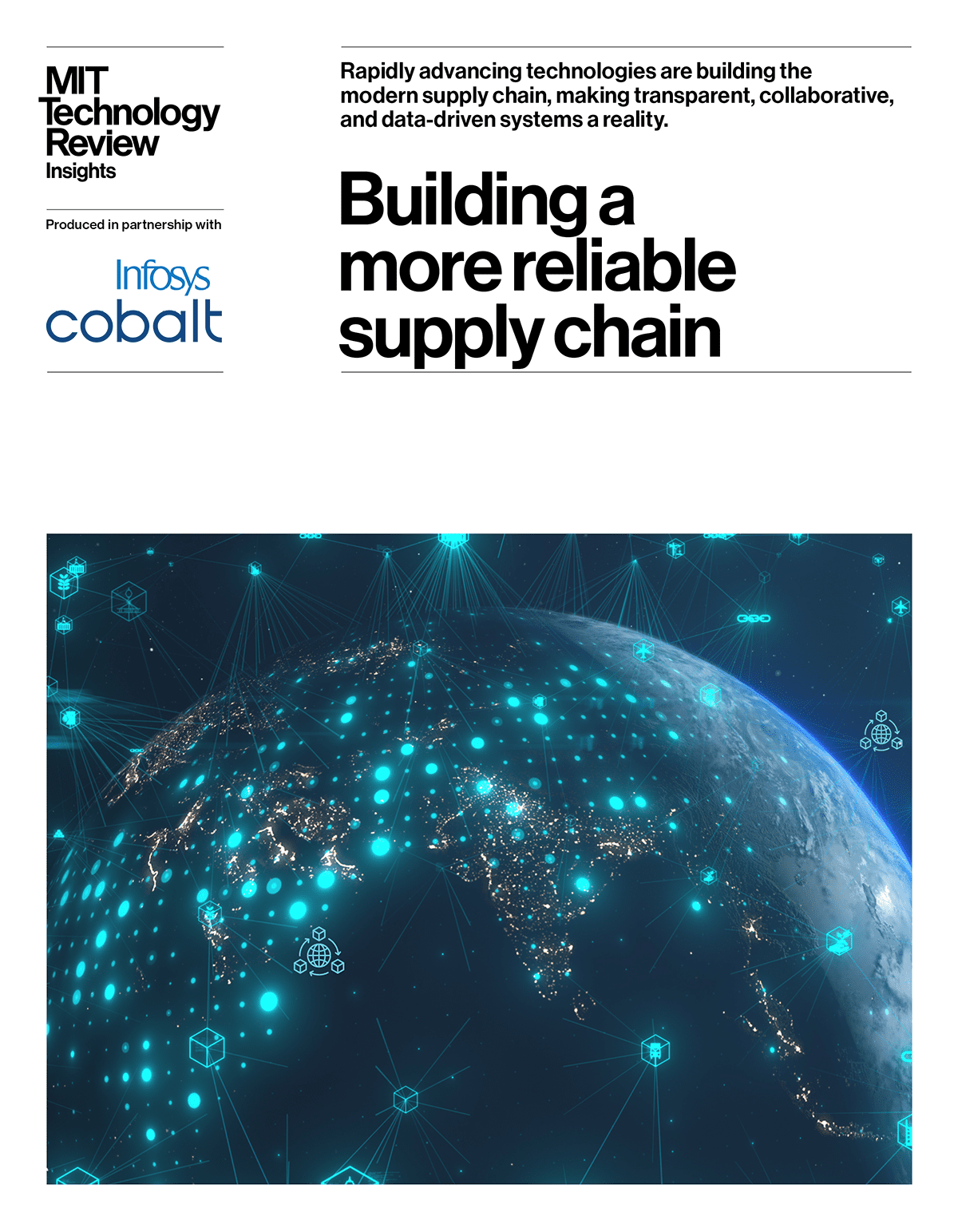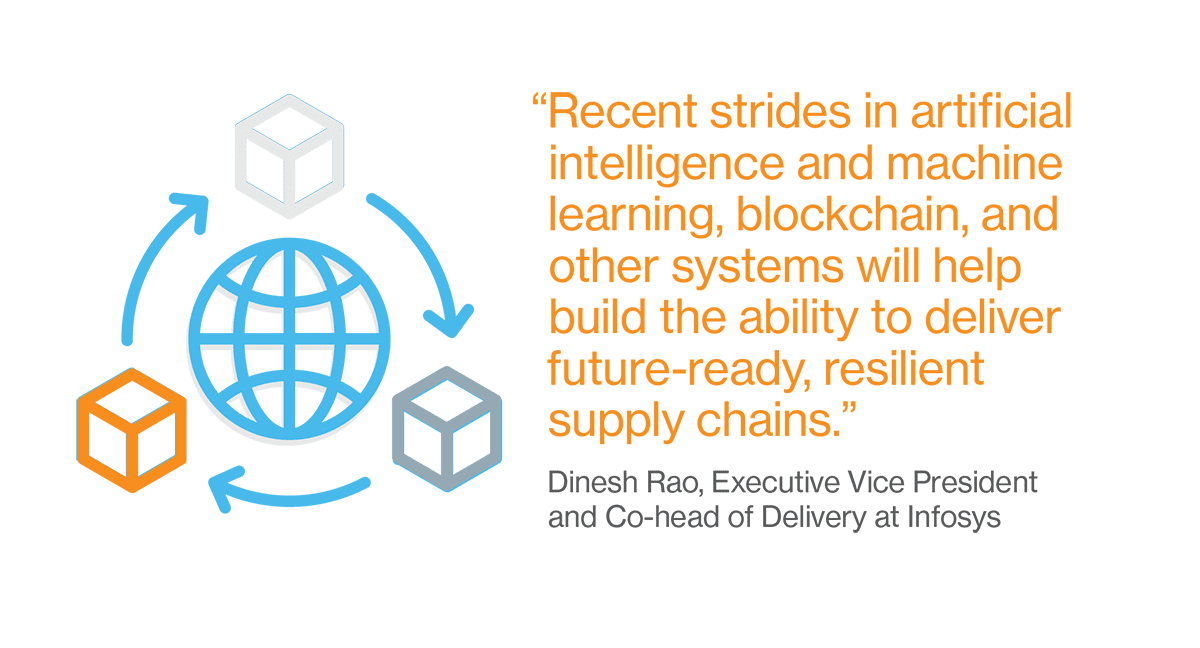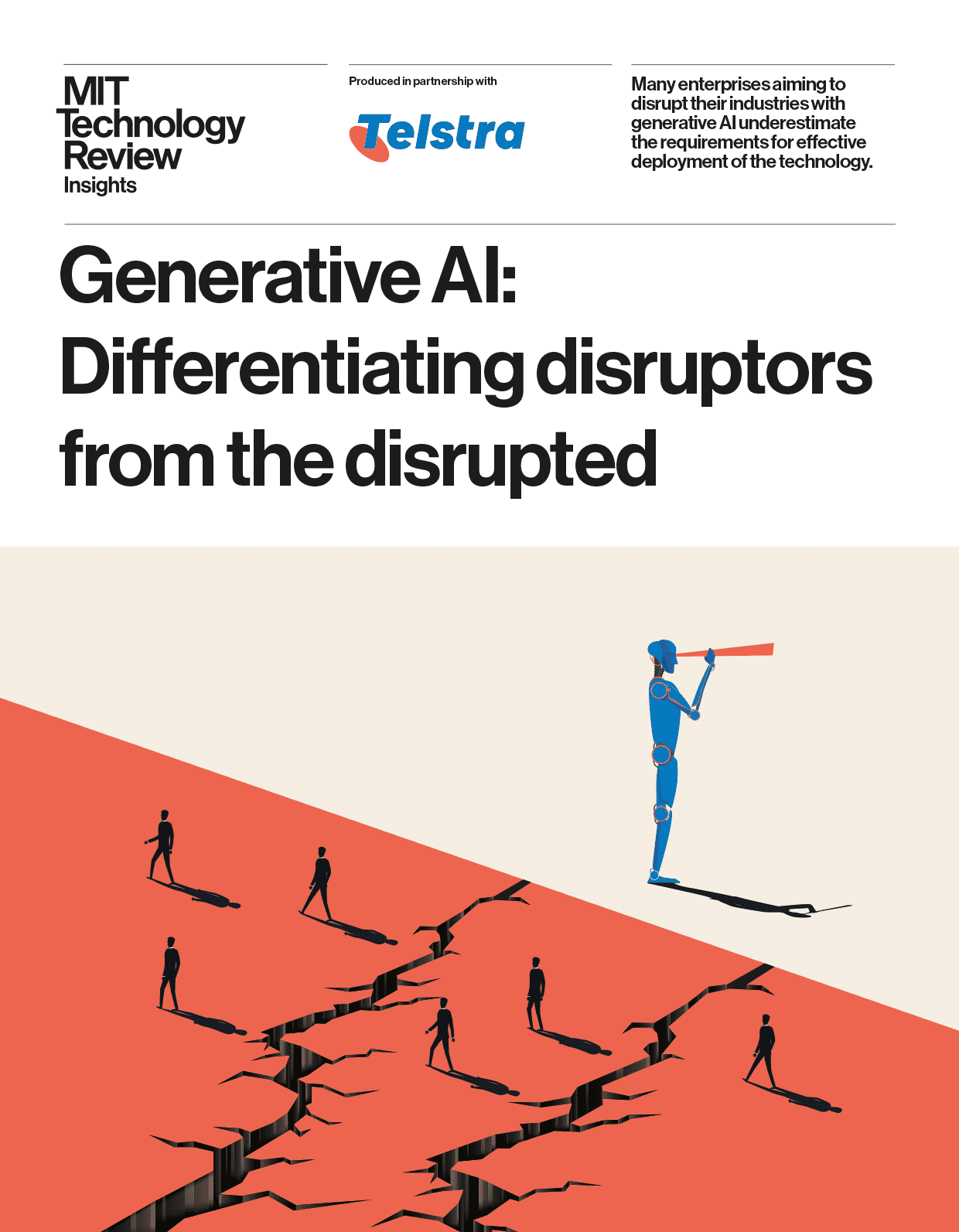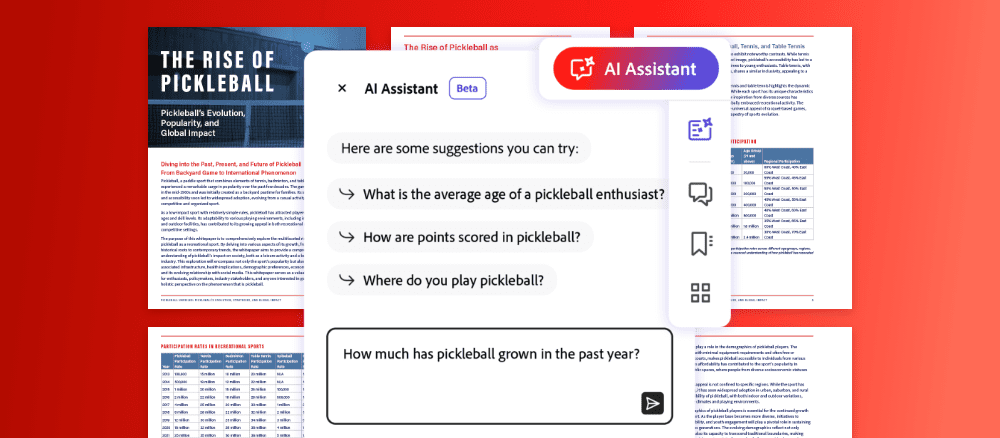Scaling customer experiences with data and AI
Today, interactions matter more than ever. According to data compiled by NICE, once a consumer makes a buying decision for a product or service, 80% of their decision to keep doing business with that brand hinges on the quality of their customer service experience, according to NICE research. Enter AI.
“I think AI is becoming a really integral part of every business today because it is finding that sweet spot in allowing businesses to grow while finding key efficiencies to manage that bottom line and really do that at scale,” says vice president of product marketing at NICE, Andy Traba.
When many think of AI and customer experiences, chatbots that give customers more headaches than help often come to mind. However, emerging AI use cases are enabling greater efficiencies than ever. From sentiment analysis to co-pilots to integration throughout the entire customer journey, the evolving era of AI is reducing friction and building better relationships between enterprises and both their employees and customers.
“When we think about bolstering AI capabilities, it’s really about getting the right data to train my models on so that they have those best outcomes.”
Deploying any technology requires a delicate balance between delivering quality solutions without compromising the bottom line. AI integration offers investment returns by scaling customer and employee capabilities, automating tedious and redundant tasks, and offering consistent experiences based on collected and specialized data.
“I think as you’re hopefully venturing into leveraging AI more to improve your business, the key recommendation I would provide is just to focus on those crystal clear high-probability use cases and get those early wins and then reinvest back into the business,” says Traba.
While artificial intelligence has increasingly grabbed headlines in recent years, augmented intelligence—where AI tools are used to enhance human capabilities rather than automate them—is worthy of similar buzz for its potential in the customer experience space, says Traba.
Currently, the customer experience landscape is highly reactive. Looking ahead, Traba foresees a shift to proactive and predictive customer experiences that blend both AI and augmented intelligence. Say a customer’s device is reaching its end-of-life state. Rather than the customer reaching out to a chatbot or contact center, AI tools would flag the device’s issue early and direct the customer to a live chat with a representative, offering both the efficiency of automation and personalized help from a human representative.
“Where I see the future evolving in terms of customer experiences, is being much more proactive with the convergence of data, these advancements of technology, and certainly generative AI,” says Traba.
This episode of Business Lab is produced in partnership with NICE.
Full Transcript
Laurel Ruma: From MIT Technology Review, I’m Laurel Ruma and this is Business Lab, the show that helps business leaders make sense of new technologies coming out of the lab and into the marketplace.
Our topic is building better customer and employee experiences with artificial intelligence. Integrating data and AI solutions into everyday business can help provide insights, create efficiencies, and free up time for employees to work on more complicated issues. And all of this builds a better experience for customers.
Two words for you: augmented intelligence.
My guest is Andy Traba, vice president of product marketing at NICE.
This podcast is produced in partnership with NICE.
Welcome Andy.
Andy Traba: Hi Laurel. Thanks for having me.
Laurel: Well, thanks for being here. So to set some context, could you describe the current state of AI within customer experience? Common use cases that come to mind are chatbots, but what are some other applications for AI in this space?
Andy: Thank you. I think it’s a great question to get started, and I think first and foremost, the use of AI is growing everywhere. Certainly, we had this big boom last year where everybody started talking about AI thanks to ChatGPT and a lot of the advancements with generative AI, and we’re certainly seeing a lot more doing now, moving beyond just talking. So just growing a use case of trying to apply AI everywhere to improve experiences. One of the more popular ones, and this technology has been around for some time, is sentiment analysis. So instead of just proactively surveying customers to ask how are they doing, what was their experience like, using AI models to analyze the conversations they’re having with brands and automatically determine that. And it’s also a good use case, I think, to emphasize the importance of data that goes into the training of AI models.
As you think about sentiment analysis, you want to train those models based on the actual customer experience conversations, maybe past records or even surveys. What you want to avoid is training a sentiment model maybe based on movie reviews or Amazon reviews, something that’s not really well connected. So certainly sentiment analysis is a very popular use case that goes beyond just chatbots.
Two other ones I’ll bring up are co-pilots. We’ve seen, certainly, a lot of recent news with the launch of Microsoft Copilot and other forms for copilots within the contact center and certainly helping customer service agents. It’s a very popular use case that we see. The reason driving that demand is the types of conversations that are getting to agents today are much more complex. AI has done a good job of taking away the easy stuff. We no longer have to call into a contact center to reset our passwords, so what’s left over for the agents is much more difficult types of interactions.So being able to assist them in real time with prompts and guidance and recommending knowledge articles to make their job easier and more effective is really popular.
And then the third and final one just on this question is the really kind of rise of AI-driven journeys. Many, many years ago, you and I would call into a contact center, and the only channel we could use was voice. Today, those channels have exploded. There’s social media, there’s messaging, there’s voice, there’s AI assistance that we can chat with. So being able to orchestrate or navigate a customer effectively through that journey and recommend the next best action or the next best channel for them to reduce that complexity is really in demand as well. And how can I even get to a point where I can proactively engage with them on the channel of their choice at the time of day that we’re likely to get a response is certainly an area that we see AI playing an important role today, but even more so in the future those three really sentiment analysis, the rise of co-pilots and then using AI across the entire customer journey.
Laurel: So as AI becomes more popular across enterprises and across industries, why is integrating AI and customer experience then so crucial for today’s business landscape?
Andy: I think it’s so crucial today because it’s finding this sweet spot in terms of business decision-making. When we think of business decision-making, we are often challenged with, am I going to focus on revenue or cost cutting? Am I going to focus on building new products or perfecting my existing products? And rarely has there been a technology that has allowed a business to achieve all of those at once. But we’re seeing that today with AI finding a sweet spot where I can improve revenue and keep customers happy and renewing or even gain new ones without having to spend additional money. I could even do that in a more efficient way with AI. Within AI, I can take a very innovative approach and produce new products that my customers demand and save time and money through efficiencies in making my current products better. I think AI is becoming a really integral part of every business today because it is finding that sweet spot in allowing businesses to grow while finding key efficiencies to manage that bottom line and really do that at scale.
Laurel: And speaking of those efficiencies, employee experience lays that foundation for the customer. But based on your time at NICE and within business operations, how does employee experience affect the overall experience then for customers?
Andy: I think what we’ve seen at NICE is really that customer experience and employee experience are hand in glove. They’re one and the same. They have tremendous correlation between each other. Some examples, just to give some anecdotes, and this is customer experience really happening everywhere. If you go into a car dealership for a Tesla or a BMW, a high-end product, but you are interacting with a salesperson who’s a little pushy or maybe just having a bad day, it’s going to deteriorate the overall customer experience, so that bad employee experience causes a negative effect. Same thing if you go to your favorite local restaurant, but you maybe have a new server who’s not really well-trained or is still figuring out the menu and the logistics that’s going to have a negative spillover effect. And then even on the flip side of that, you can see employee experience having a positive effect on their overall customer experience.
If employees are engaged and they have the right information and the right tools, they can turn a negative into a positive. Think of airlines, a very commoditized industry right now, but if you have a problem with your flight and it got canceled and you have a critical moment of need, that employee from that airline could really turn that experience around by finding a new flight, booking you, making sure that you are on your trip and meeting your destination on time or without very little delay. So I think when we think about experiences at large and the employee and the customer outcomes are very much tied together, we’ve done research here at NICE on this exact topic, and what we found was once a consumer makes a buying decision for a particular product or service, after that point, 80% of that consumer’s decision to continue doing business with that brand is based on the quality of their interactions.
So how those conversations play out, plays a very, very important part of whether or not they will continue doing business with that brand. Today, interactions matter more than ever. To conclude on this question, one of my favorite quotes, customer experience today isn’t just part of the business, it is the business. And I think employees play a really important front role in achieving that.
Laurel: That certainly makes sense. 80% is a huge number, and I think of that in my own experiences, but could you explain the difference between artificial intelligence and augmented intelligence and also how they overlap?
Andy: Yeah, it’s a great question. I think today artificial intelligence is certainly capturing all of the buzz, but what I think is just as buzzworthy is augmented intelligence. So let’s start by defining the two. So artificial intelligence refers to machines mimicking human cognition. And when we think about customer experience, there’s really no better example of that than chatbots or virtual assistants. Technology that allows you to interact with the brand 365 24/7 at any time that you need, and it’s mimicking the conversations that you would normally have with a live human customer service representative. Augmented intelligence on the other hand, is really about AI enhancing human capabilities, increasing the cognitive load of an individual, allowing them to do more with less, saving them time. I think in the domain of customer experience, co-pilots are becoming a very popular example here. How can co-pilots make recommendations, generate responses, automate a lot of the mundane tasks that humans just don’t like to do and frankly aren’t good at?
So I think there’s a clear distinction then between artificial intelligence, really those machines taking on the human capabilities 100% versus augmented, not replacing humans, but lifting them up, allowing them to do more. And where there’s overlap, and I think we’re going to see this trend really start accelerating in the years to come in customer experiences is the blend between those two as we’re interacting with a brand. And what I mean by that is maybe starting out by having a conversation with an intelligent virtual agent, a chatbot, and then seamlessly blending into a human live customer representative to play a specialized role. So maybe as I’m researching a new product to buy such as a cell phone online, I can be able to ask the chatbot some questions and it’s referring to its knowledge base and its past interactions to answer those. But when it’s time to ask a very specific question, I might be elevated to a customer service representative for that brand, just might choose to say, “Hey, when it’s time to buy, I want to ensure you’re speaking to a live individual.” So I think there’s going to be a blend or a continuum, if you will, of these types of interactions you have. And I think we’re going to get to a point where very soon we might not even know is it a human on the other end of that digital interaction or just a machine chatting back and forth? But I think those two concepts, artificial intelligence and augmented intelligence are certainly here to stay and driving improvements in customer experience at scale with brands.
Laurel: Well, there’s the customer journey, but then there’s also the AI journey, and most of those journeys start with data. So internally, what is the process of bolstering AI capabilities in terms of data, and how does data play a role in enhancing both employee and customer experiences?
Andy: I think in today’s age, it’s common understanding really that AI is only as good as the data it’s trained on. Quick anecdote, if I’m an AI engineer and I’m trying to predict what movies people will watch, so I can drive engagement into my movie app, I’m going to want data. What movies have people watched in the past and what did they like? Similarly in customer experience, if I’m trying to predict the best outcome of that interaction, I want CX data. I want to know what’s gone well in the past on these interactions, what’s gone poorly or wrong? I don’t want data that’s just available on the public internet. I need specialized CX data for my AI models. When we think about bolstering AI capabilities, it’s really about getting the right data to train my models on so that they have those best outcomes.
And going back to the example I brought in around sentiment, I think that reinforces the need to ensure that when we’re training AI models for customer experience, it’s done off of rich CX datasets and not just publicly available information like some of the more popular large language models are using.
And I think about how data plays a role in enhancing employee and customer experiences. There’s a strategy that’s important to derive new information or derive new data from those unstructured data sets that often these contact centers and experience centers have. So when we think about a conversation, it’s very open-ended, right? It could go many ways. It is not often predictable and it’s very hard to understand it at the surface where AI and advanced machine learning techniques can help though is deriving new information from those conversations such as what was the consumer’s sentiment level at the beginning of the conversation versus the end. What actions did the agent take that either drove positive trends in that sentiment or negative trends? How did all of these elements play out? And very quickly you can go from taking large unstructured data sets that might not have a lot of information or signals in them to very large data sets that are rich and contain a lot of signals and deriving that new information or understanding, how I like to think of it, the chemistry of that conversation is playing a very critical role I think in AI powering customer experiences today to ensure that those experiences are trusted, they’re done right, and they’re built on consumer data that can be trusted, not public information that doesn’t really help drive a positive customer experience.
Laurel: Getting back to your idea of customer experience is the business. One of the major questions that most organizations face with technology deployment is how to deliver quality customer experiences without compromising the bottom line. So how can AI move the needle in this way in that positive territory?
Andy: Yeah, I think if there’s one word to think about when it comes to AI moving the bottom line, it’s scale. I think how we think of things is really all about scale, allowing humans or employees to do more, whether that’s by increasing their cognitive load, saving them time, allowing things to be more efficient. Again, that’s referring back to that augmented intelligence. And then when we go through artificial intelligence thinking all about automation. So how can we offer customer experience 365 24/7? How can allowing consumers to reach out to a brand at any time that’s convenient boost that customer experience? So doing both of those tactics in a way that moves the bottom line and drives results is important. I think there’s a third one though that isn’t receiving enough attention, and that’s consistency. So we can allow employees to do more. We can automate their tasks to provide more capacity, but we also have to provide consistent, positive experiences.
And where AI and machine learning really help here is finding areas of variability, finding not only the areas of variability but then also the root cause or the driver of those variabilities to close those gaps. And a brand I’ll give a shout out to who I think does this incredibly well is Starbucks. I can go to a Starbucks in any location around the world and order an iced caramel macchiato, and I’m going to get that same drink experience regardless of the thousands of Starbucks locations. And I think that consistency plays a really powerful role in the overall customer experience of Starbucks’ brand. And when you think about the logistics of doing that at scale, it’s incredibly complex and challenging. If you have the data and you have the right tools and the AI, finding those gaps and offering more consistent experiences is incredibly powerful.
Laurel: So could you share some practical strategies and best practices for organizations to leverage AI to empower employees, foster positive and productive work environments, and then also all of this would ultimately improve customer interactions?
Andy: Yeah, I think the overall positive, going back to earlier in our conversation is there are many use cases. AI has a tremendous opportunity in this space. The recommendation I would provide is to focus first on a crystal clear, high-probability use case for your business. Auto summary or the automated note-taking of agents after call work is becoming an increasingly popular one that we’re seeing in the space. And I think the reasons for it are really clear. It’s a win-win-win for the employee, the customer, and the business. It’s a win for the employee because AI is going to automate something that is mundane for them or very procedural. If you think of a customer service representative, they’re taking 40, 50 maybe in upwards of 60 conversations a day during their job, taking notes of what was talked about. What are action items? Very complicated, mundane, tiresome even. They don’t like doing it.
So AI can offload that activity from them, which is a win for the employee. It’s a win for the customer as a lot of times the agents are great at note-taking, especially when they’re doing that so often, which can lead to that unfortunate experience where you have to call back as a consumer and repeat yourself because the agent you’re now talking to can’t understand or doesn’t have good information about what you called or interacted with previously. So from a consumer experience, it helps them because they have to repeat themselves less often. The agent that they’re currently speaking with can offer a more personalized service because they have better notes or history of past interactions.
And then finally, the third win, it’s really good for the business because you’re saving time and money that the agents no longer have to manually do something. We see that 30 to 60 seconds of note-taking at a business with 1,000 employees adds up to be millions of dollars every year. So there’s a clear-cut business case for the business to achieve results, improve customer experience, and improve employee experience at the same time. I think as you’re hopefully venturing into leveraging AI more to improve your business, the key recommendation I would provide is just to focus on those crystal clear high-probability use cases and get those early wins and then reinvest back into the business.
Laurel: Yeah, I think those are the positive aspects of that, but concerns about job loss due to automation tend to crop up with AI deployment. So what are the opportunities that AI integration can provide for organizations and their employees so it’s a win-win for everybody?
Andy: And certainly empathetic to this topic. As with all new technologies, whenever there’s excitement around them, there’s also this uncertainty of what will those long-term outcomes be? But I think when we historically look back, all transformative technologies have boosted GDP and they’ve created more jobs. And so I see no reason to believe this time around will be different. Now those jobs might be different and new roles will emerge. When it comes to customer experience and the employee experience one interesting theory I’m following is, if you think about Apple, they had a really revolutionary model where they branded their employees geniuses. So you’d go into an Apple store and you would speak to a genius, and that model carried through all of their physical flagship stores. A very positive model. Back in the day, people would actually pay money to go speak to a genius or get a priority customer service slot but a model that’s really hard to scale and a model that hasn’t been successful in a virtual environment.
I think when we see AI and a lot of these new technology advancements though, that’s a prime example of maybe a new job that does emerge where if AI is offloading a lot of the interactions to chatbots, what do customer service agents do? Maybe they become geniuses where they’re playing a more proactive, high-value add back to consumers and overall improving the service and the experience there. So I do think that AI will have job shifts, but overall there’ll be a net positive just like there has been with all past transformative technologies.
Laurel: Continuing that look ahead, how do you see the era of AI evolving in terms of customer and employee experience? What excites you about the future in this space?
Andy: This is actually what I’m most excited about is when we think about customer experience today, it’s highly reactive. As a consumer, if I have a problem, I search your website, I interact with your chatbot, I end up talking to a live customer service representative. The consumer is the driving force of everything and the business or the brand is having to be reactive to them. Where I see the future evolving in terms of customer experiences, is being much more proactive with the convergence of data, these advancements of technology, and certainly generative AI. I do see AI becoming smarter and being more predictive and proactive to alert that there is going to be a problem before the consumer actually is experiencing it and to take action on that proactively before that problem manifests itself.
And just a quick example of maybe there’s a media or a cable company where a device is reaching its end-of-life state, so rather than it have it go on the fritz the day of the Super Bowl, reach out, be proactive, contact that individual, give them specific instructions to follow. And I think that’s really where we see the advancements of not only big data, AI, but just the abundance of the ability to reach out in preferred channels, whether that’s a simple SMS or a high-touch service representative reaching out really where the future of customer experience moves to a much more proactive state from its reactive state today.
Laurel: Well, thank you so much, Andy. I appreciate your time, and thank you for joining us on the Business Lab today.
Andy: Thanks. This was an excellent conversation, Laurel, and thanks again for having me.
Laurel: That was Andy Traba, who is the vice president of product marketing at NICE, who I spoke with from Cambridge Massachusetts, the home of MIT and MIT Technology Review.
That’s it for this episode of Business Lab. I’m your host, Laurel Ruma. I’m the global director of Insights, the custom publishing division of MIT Technology Review. We were founded in 1899 at the Massachusetts Institute of Technology, and you can find us in print on the web and at events each year around the world. For more information about us and the show, please check out our website at technologyreview.com.
This show is available wherever you get your podcasts. If you enjoyed this episode, we hope you’ll take a moment to rate and review us. Business Lab is a production of MIT Technology Review. This episode was produced by Giro Studios. Thanks for listening.
This content was produced by Insights, the custom content arm of MIT Technology Review. It was not written by MIT Technology Review’s editorial staff.









